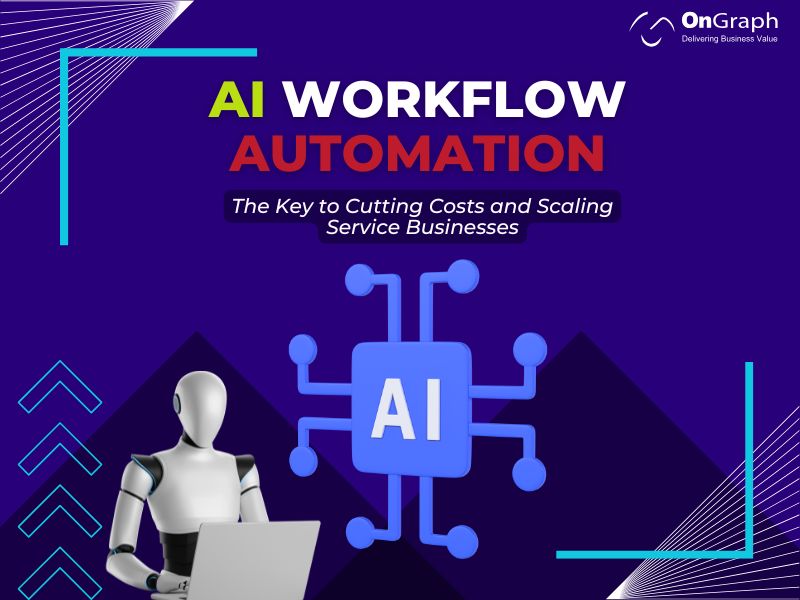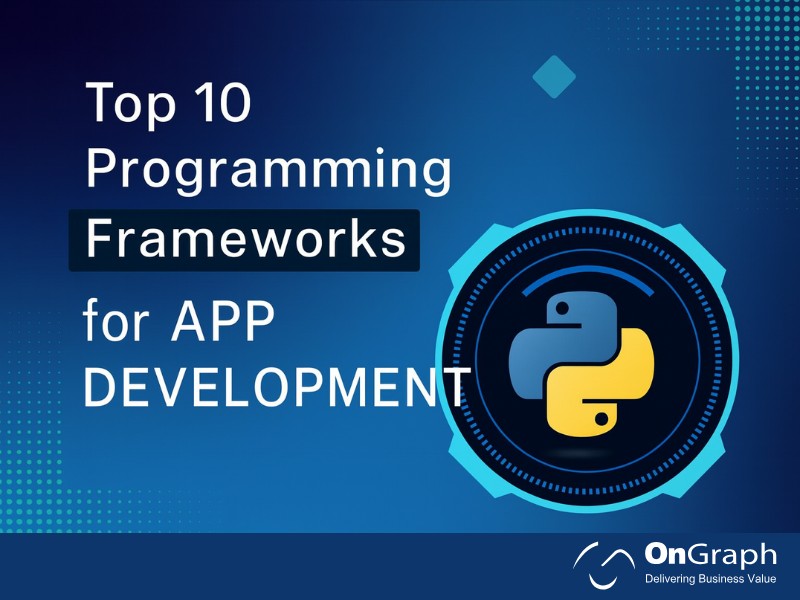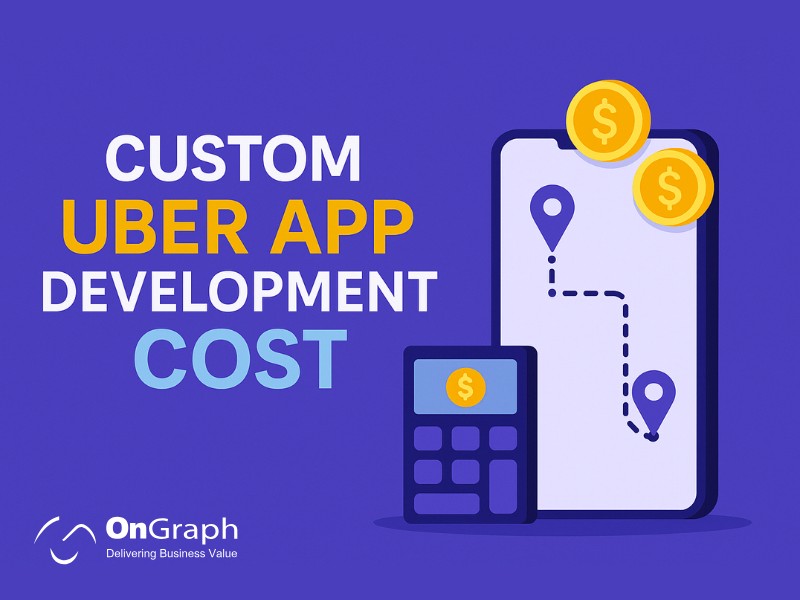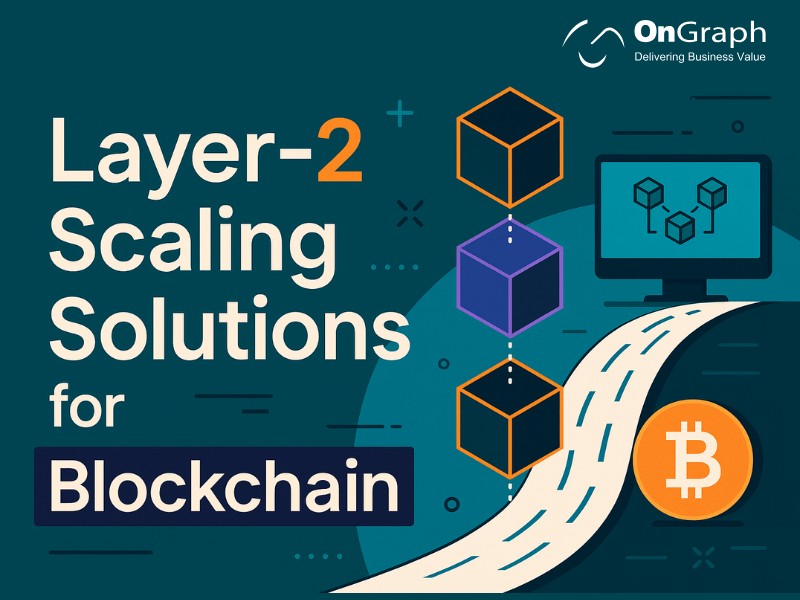In this article
- 1. What Is AI Workflow Automation?
- 2. The Role of Workflow Automation Software
- 3. Why Businesses Are Adopting AI Automation Tools
- 4. Business Process Automation with AI: End-to-End Optimization
- 5. How AI-Powered Workflow Automation Solutions Improve Scalability
- 6. How an AI Business Automation Platform Drives ROI
- 7. The Role of AI Voice Agent Development Solutions in Automation
- 8. Building Custom AI Development Solutions for Unique Needs
- 9. Real-World Case Study: AI Workflow Automation in Customer Operations
- 10. Overcoming Common Challenges in Implementing AI Workflow Automation
- 11. The Future of AI Workflow Automation
- Conclusion
Modern businesses operate in an environment where efficiency defines competitiveness. As customer expectations rise, companies must deliver faster and more accurately than ever. AI workflow automation is emerging as the most powerful solution to meet this challenge.
By integrating artificial intelligence into everyday operations, businesses can automate repetitive tasks, reduce costs, and scale operations without expanding headcount.
According to a 2024 Deloitte report, organizations implementing automation saved an average of 25–35% in operational expenses while improving process accuracy by 40%.
For service-driven businesses—like customer support, logistics, healthcare, and financial services—AI workflow automation offers an unparalleled opportunity to streamline processes, empower employees, and enhance customer experience.
1. What Is AI Workflow Automation?
AI workflow automation is the process of using artificial intelligence and automation software to execute and optimize repetitive business workflows.
Traditional automation relies on fixed rules and scripts. However, AI-driven automation uses machine learning, data analytics, and natural language processing to learn and adapt over time.
For instance, a traditional booking system might schedule appointments based on predefined rules. An AI-powered workflow, however, can learn user preferences, predict peak demand, and automatically assign slots for maximum efficiency.
In simple terms:
AI workflow automation is like having a digital workforce that learns, makes decisions, and performs tasks 24/7 with accuracy and speed.
2. The Role of Workflow Automation Software
Workflow automation software serves as the backbone of every AI-driven business operation. It connects different systems, departments, and data sources into a single, streamlined process.
Here’s how it transforms service businesses:
- Task standardization: Automates routine, repetitive tasks such as scheduling, reporting, or data entry.
- Real-time coordination: Integrates departments like HR, operations, and customer service.
- Process visibility: Tracks task completion, identifies bottlenecks, and ensures accountability.
According to Forrester Research, companies using automation software improve turnaround time by 50% on average. For example, a cleaning service business can automate job assignment, route optimization, and payment tracking, saving hundreds of man-hours monthly.
3. Why Businesses Are Adopting AI Automation Tools
AI automation tools represent the next stage of digital transformation. These tools are not limited to executing tasks—they make decisions and improve performance through feedback loops.
Key advantages include:
- Smart Decision-Making: Tools analyze real-time data to suggest the most efficient actions.
- Error Reduction: AI learns from past patterns, reducing human error and duplication.
- 24/7 Availability: Bots and virtual agents work round the clock, ensuring continuous operations.
Example: A logistics company using AI automation tools can forecast delivery delays, reroute drivers in real time, and automatically notify customers—improving both satisfaction and efficiency.
4. Business Process Automation with AI: End-to-End Optimization
Business process automation AI is about connecting every part of a business into a unified, intelligent system. Instead of working in silos, departments share data and make joint decisions.
Typical implementations include:
- Finance: Automating invoice processing and fraud detection.
- Customer Support: Auto-classifying tickets and suggesting AI-driven responses.
- Healthcare: Scheduling patient appointments, billing, and report generation.
A recent McKinsey survey found that 60% of occupations could automate at least one-third of their activities with existing technology.
This means service-based businesses have massive opportunities to enhance productivity without increasing workforce costs.
5. How AI-Powered Workflow Automation Solutions Improve Scalability
Scalability is the biggest challenge for growing service businesses. Manual systems cannot handle rising customer demands efficiently.
AI-powered workflow automation solutions make scaling effortless by:
- Automatically adjusting workloads during demand spikes.
- Providing predictive analytics for resource allocation.
- Ensuring process consistency across teams and regions.
Imagine a real estate management firm handling 10,000 property listings. Without automation, tracking every lead, inspection, and payment would be impossible.
With AI workflow automation, the system prioritizes high-value leads, schedules agent visits, and even sends personalized follow-ups — all without human intervention.
This results in higher conversions, lower operational costs, and faster scaling.
6. How an AI Business Automation Platform Drives ROI
An AI business automation platform unifies all automation layers — task automation, voice AI, analytics, and process monitoring — into one ecosystem.
This integration delivers tangible financial benefits:
- Reduced Redundancy: Eliminates data duplication between tools like CRM, ERP, and ticketing software.
- Enhanced Visibility: Managers can view all active workflows in one dashboard.
- Improved ROI: Real-time data allows better decision-making and resource planning.
According to PwC’s Global Automation Survey 2024, companies adopting AI automation platforms achieved a 30–40% ROI in their first year due to improved efficiency and lower operational waste.
7. The Role of AI Voice Agent Development Solutions in Automation
AI Voice Agent Development Solutions bring human-like conversational capabilities to service workflows.
They can:
- Handle inbound calls for bookings, inquiries, or complaints.
- Place outbound reminder calls or feedback surveys.
- Integrate with backend CRMs for real-time data updates.
Example: A salon business using an AI voice agent can handle appointment requests, cancellations, and reminders automatically.
The AI agent interacts with customers naturally and syncs updates with the scheduling system, reducing call volume for human agents by 60%.
Voice agents also improve accessibility, allowing non-technical or elderly users to interact with apps through natural language commands.
8. Building Custom AI Development Solutions for Unique Needs
Every business has unique workflows that generic automation tools may not support. Custom AI Development Solutions fill this gap by building tailored models, APIs, and dashboards.
Custom solutions can include:
- Predictive models for service demand forecasting.
- AI bots for handling multi-channel communication.
- Process-specific automations for niche operations like insurance claim validation or logistics dispatching.
The result?
A flexible, future-ready digital infrastructure that adapts to market trends without needing a full rebuild.
Ready to Automate Your Workflows with AI? Let’s Build Your Solution
We build AI solutions that automate workflows and transform operations.
9. Real-World Case Study: AI Workflow Automation in Customer Operations
A mid-sized e-commerce company implemented AI workflow automation to manage customer returns.
Before automation:
- Each return took an average of 15 minutes of manual processing.
- Agents manually verified orders and updated inventory.
- Response time exceeded 24 hours, frustrating customers.
After implementing AI automation tools:
- Order verification, refund initiation, and customer notifications were automated.
- Average handling time dropped to 3 minutes.
- Customer satisfaction scores improved by 42%.
The company saved over $250,000 annually and scaled operations without hiring more staff.
10. Overcoming Common Challenges in Implementing AI Workflow Automation
While the benefits are enormous, successful adoption requires strategy and discipline.
Common Challenges
- Poor Data Quality: AI depends on accurate, consistent data.
- Change Resistance: Employees may fear job loss or system complexity.
- Integration Gaps: Legacy systems often lack modern APIs.
- Undefined Metrics: Without KPIs, it’s difficult to measure success.
Best Practices
- Start small with high-impact workflows.
- Train employees to work alongside AI systems.
- Use pilot projects to demonstrate value.
- Monitor, measure, and continuously improve models.
Following a phased rollout helps ensure faster adoption and higher ROI.
11. The Future of AI Workflow Automation
AI workflow automation is evolving rapidly. The next few years will bring even more intelligent systems that make autonomous decisions with minimal human input.
Emerging trends include:
- Generative AI in automation: Creating personalized content and responses on the fly.
- Predictive maintenance: Identifying potential service failures before they occur.
- Cross-platform integration: Unifying AI with IoT and blockchain for traceability.
According to IDC, the global automation market will surpass $80 billion by 2026, driven by AI and workflow orchestration technologies. Businesses adopting early will enjoy sustained competitive advantages.
Conclusion
AI workflow automation is not just about cutting costs—it’s about enabling growth, scalability, and superior customer experiences.
By implementing workflow automation software, AI automation tools, and AI-powered workflow automation solutions, service businesses can streamline operations, enhance reliability, and increase profitability.
Platforms combining AI business automation, AI Voice Agent Development Solutions, and custom AI Development Solutions empower companies to evolve beyond manual processes.
The result is a future-ready organization — efficient, agile, and prepared to scale in any market environment.
FAQs
AI workflow automation uses artificial intelligence to perform and optimize repetitive business tasks.
It combines data, logic, and algorithms to analyze, decide, and execute actions automatically.
Unlike fixed rule systems, AI-based automation learns from data and improves with time.
It handles exceptions, adapts to changes, and enhances productivity across all departments.
AI automation tools improve efficiency by analyzing large data volumes and identifying task patterns.
They eliminate manual intervention in repetitive workflows such as approvals, scheduling, and reporting.
AI tools also detect anomalies, reducing errors and downtime.
As they learn from outcomes, they continue to refine accuracy, speed, and task routing efficiency.
Almost every industry benefits from automation, but service-based sectors lead the adoption curve.
Healthcare uses AI automation for appointment scheduling and claims processing.
Finance automates KYC verification and fraud detection.
E-commerce uses it for returns, logistics, and inventory tracking.
Customer support integrates automation with voice agents for 24/7 service delivery.
AI Voice Agents replace manual call handling with conversational automation.
They understand natural speech, identify intent, and perform relevant actions instantly.
They can schedule bookings, confirm appointments, or answer FAQs without human input.
When integrated with workflow software, they update CRMs, send alerts, and complete full cycles autonomously.
The most common barriers include poor data quality, limited AI literacy, and legacy system incompatibility.
Organizations may also struggle with employee resistance to change.
The solution lies in phased deployment, stakeholder training, and transparent communication.
A clear ROI demonstration ensures quicker buy-in and smoother transformation.
AI automation doesn’t replace employees—it empowers them.
By removing repetitive work, employees focus on creativity, strategy, and decision-making.
Workload stress reduces, while overall productivity increases.
Companies experience higher job satisfaction and better employee retention rates.
Success should be tracked through measurable KPIs.
Metrics include cycle time reduction, cost savings, customer satisfaction, and accuracy improvement.
Businesses should also evaluate ROI against initial investment costs.
Continuous monitoring ensures that automation evolves with organizational goals.
About the Author
Let’s Create Something Great Together!
Latest Blog
















